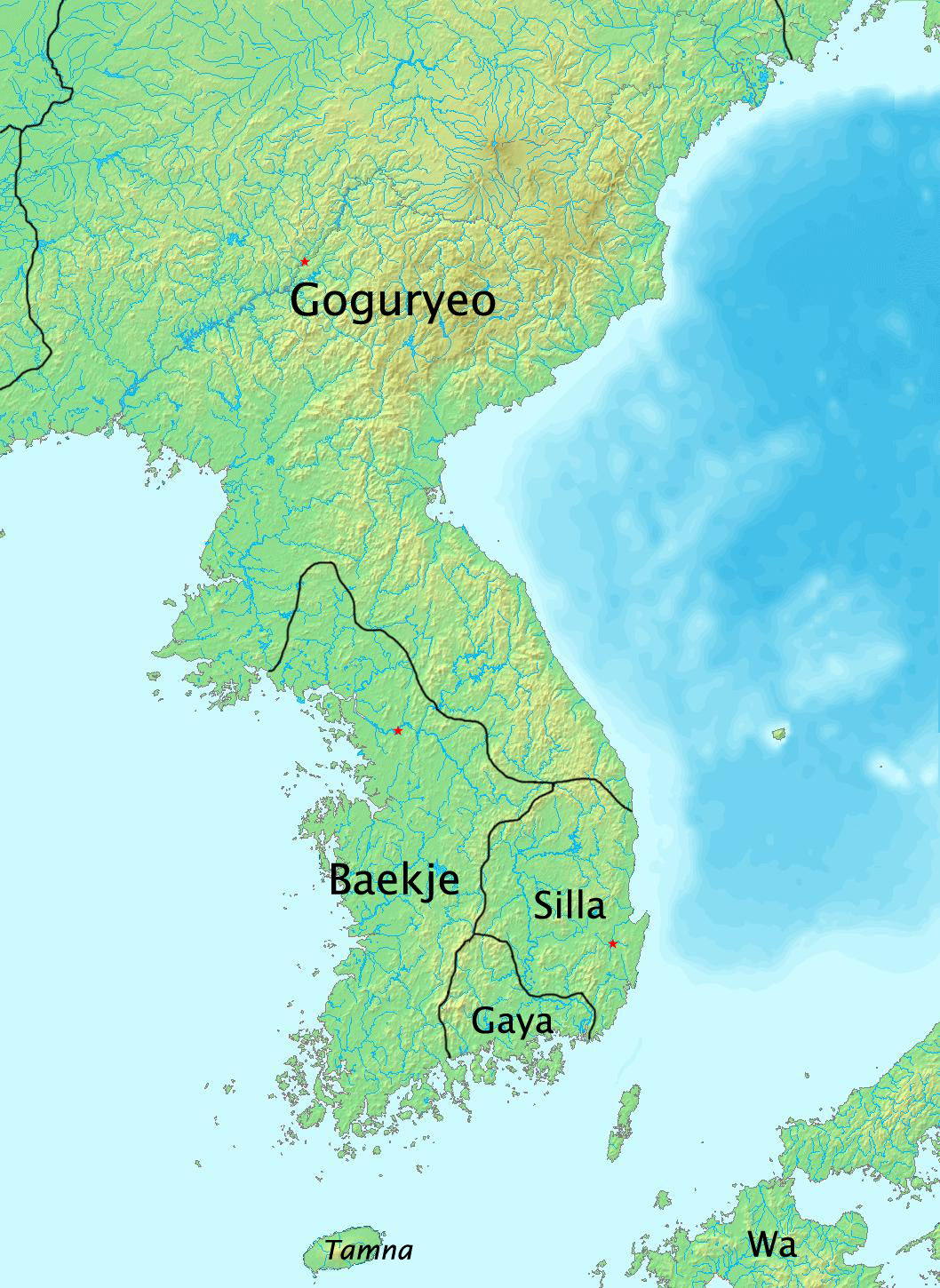AS 201 Korean History
Earliest Human Communities with Pottery Remains date from 8,000 BCE
--So, a little older than China, not quite as old as Japan
--1300 BCE Bronze Artifacts but not a typical "Bronze Age" with cities, writing, complex society, etc. as in the Shang Dynasty.
--Migration into Korea came mostly from Inner Asia, Mongolia, Siberia, Manchuria.
--Korean history is often the story of the heavy influence or control of the Chinese, the Manchus, the Mongols, and the Japanese, always needing to align itself with whoever could afford it the greatest protection.
--Earliest polities were the Puyo in central Manchuria and Koguryo, Yalu River in N. Korea
--Tungusic Puyo tribes moved south from the broad flatland of Manchuria's Sungari River basin towards the foothills and high plains between the middle-Yalu and T'ung-chia (modern Hun Jiang) River basins.
--By 37 BC a confederation of Kingdoms emerged called Koguyro. Both the Puyo and Koguryo absorbed Chinese influence;
--Koguryo eventually absorbed Puyo; refugees from Puyo later reassembled and formed Paekche or Baekje
Three Kingdoms Era: 313-668
 -- The powerful state of Goguryeo or Koguryo dominated northern Korea and much of the Manchurian Plain
-- The powerful state of Goguryeo or Koguryo dominated northern Korea and much of the Manchurian Plain
-- It fought China's Sui and Tang troops very fiercely
-- It is assumed that some kind of Paekche expedition to Kyushu, Japan, led to the creation of the Yamato Kingdom and the beginnings of a new cultural legacy.
--Buddhism was Introduced to Koguryo and Paekche in the late 370s and 380s; as in Japan, it helped with state building and sprerad of Chinese learning including Confucianism.
--Son was Korea's version of Chan or Zen and introduced earlier in Korea than Japan.
--Silla or Shilla eventially unified Korea and borrowed heavily from Tang Chinese culture.
--668-892 = Silla Rule
--During the late 9th century, Silla laid out is captal as a virtual miniature replica of the Tang Dynasty.
--Silla's capital city exemplified the finest architecture, painting, ceramics, sculpture, and music in Asia.
--Elite Silla aristocrats lived an extravagant life, even by contemporary standards.
--Even so, despite all the Tang influences, Silla was unique, very aristocratic relying on its old "True Bone" family system who monopolized the top 5 of 9 grades of Aristocracy
--Parhae (698-926) later claimed to inherit Koguryo state but was it a Korean state? Or more Inner Asian, Xianbei, Jurchen or Khitan?
--Koryo 935-1392 succeeded Silla; borrowed Tang and Song centralizing institutions and techniques
--This meant greater Chinese Buddhist and Confucian infuence
--But Koryo constantly dealing with northern neighbors;
--military takeover in 1170; Mongols invade by 1230s; Khublilai treated Koryo like an inner Asian power;
--Koreans had to help Mongols invade Japan;
--Confuciansim becomes an even stronger influence in Korea 1351-1392;
--Choson Korea 1392-1800; Confucianism outstrips Buddhism as an influence
--Yangban class dominated Choson society; they were civil servants, people whose sole profession and ambition in life was to hold public office. Had an "east rank," tongban, and "west rank," soban, who held the military posts.
 -- The powerful state of Goguryeo or Koguryo dominated northern Korea and much of the Manchurian Plain
-- The powerful state of Goguryeo or Koguryo dominated northern Korea and much of the Manchurian Plain